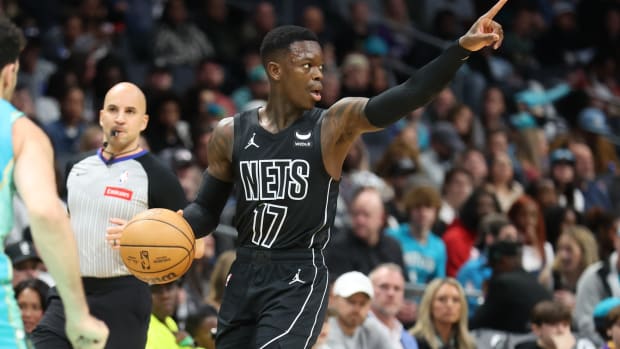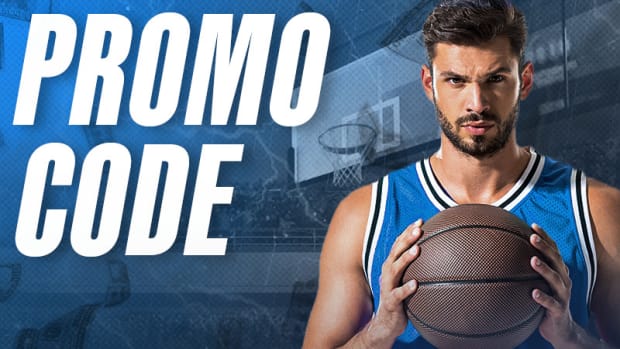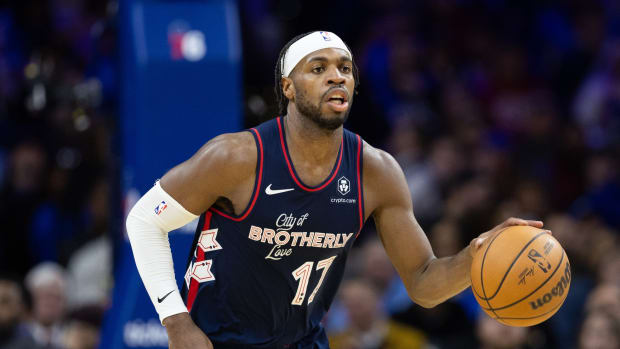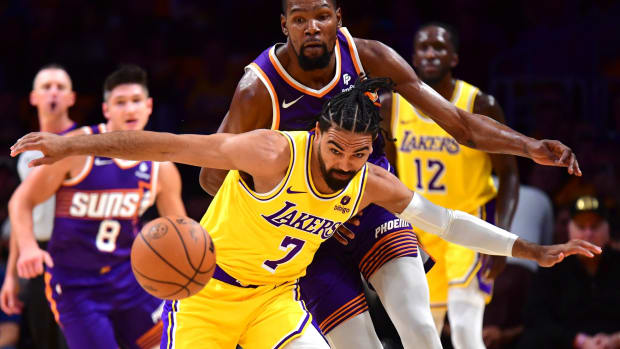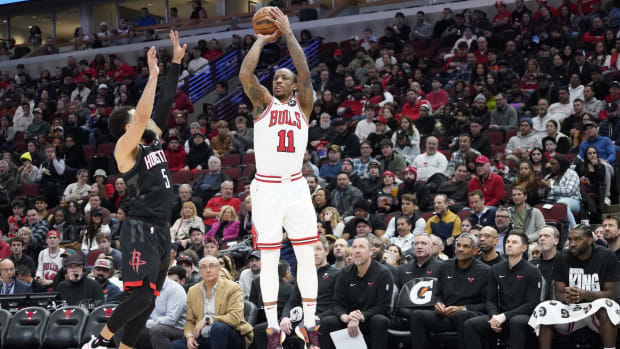The Fundamentals: Clips need further evolution from Blake Griffin to contend
Chris Paul (not pictured) says the Clippers don't have a chance without Blake Grffin "being great." (David Sherman/NBAE via Getty Images)
By Rob Mahoney
The concept of NBA stardom is more or less universal across the league. And yet, try as we might to compare them, no two stars are exactly alike in either form or function, thus making every roster an ecosystem unto itself. The approach and contributions of a team's stars ultimately come to shape its identity, whether through spatial alignments or specific synergy. Each of these elements contributes to the unique nature of a team environment, both drawing from and depending on the particular qualities that form the basis of a star's abilities.
All of which brings us to the Clippers' Blake Griffin -- a consensus star, albeit one whose role and capabilities seem particularly misunderstood. Griffin is not his team's best player, but he bears the burden of his amazing athletic ability; a big man so quick and so explosive would seem capable of doing anything, and thus Griffin is largely expected to do everything. Even Clippers teammate Chris Paul expects the world of Griffin, despite the fact that the 23-year-old big man is still finding his way through the league. From Ian Thomsen's feature on the Clippers back in February:
The priority for Paul has been to turn Griffin into his Tim Duncan. Paul can't challenge Griffin to improve defensively "unless,'' said Paul, "I'm doing it myself. I have to work. The thing is, Blake is a hard worker, he works hard on stuff like that. And I forget at times that Blake is young. Like sometimes I look at him like we've been in the league the same amount of time.''
He laughed and went on, "But that's not the case. And I understand that we don't have a chance without him being great. Not being good. Without him being great. That's why he is who he is and what he means to our team.''
That's a heavy expectation, and one that also informs more general evaluations of Griffin's performance. His play is critiqued at every turn, but it's high time we pin down the details in light of L.A.'s mounting championship contention: What is it, exactly, that the Clippers need from Griffin in order to be successful?
The most natural place to begin is on offense, where Griffin has been tremendously effective for three straight seasons despite a marginal slip in his scoring averages. Far too many have chosen to read the drift in Griffin's per-game scoring (22.5 PPG as a rookie, 20.7 PPG as a sophomore, 18.7 PPG this year) as regression, but what we're actually witnessing is the evolution of a rather gifted all-around player.
Griffin's first year in the NBA was spent capitalizing on his most obvious advantages: he powered through smaller defenders, drove past slower bigs and leapt over damn near everyone. All effective strategies, no doubt, but predictable and relatively easy for an opposing defense to account for. Griffin has since made obvious efforts to build out his game, and in the process has given the Clippers' offense a vital dynamism. Vinny Del Negro may have added a page or two to his playbook this year, but his team's offensive structure remains amazingly simple, and is redeemed largely because of the broad, pliable skill sets of Griffin and Chris Paul. The latter finds ways to elevate even the stalest pick-and-roll sets, diagramming elaborate play options in his head as he scans the floor. The former, contrary to a bafflingly popular belief, is far more than just a dunker; Griffin's reputation still suggests that he's some raw athlete, all while the Clippers have succeeded in part due to his ability to thrive in all kinds of situations.
And given the lack of systemic help from Del Negro and his staff, that's exactly what the Clippers need. The more hats that Griffin can wear within L.A.'s offense the better, as every new dimension will bring with it a new set of valuable alternatives. That versatility is the real measure of Griffin's offensive value, and of far greater reward than topping some arbitrary 20-points-per-game standard. The Clippers need Griffin's work as a roll threat, which forces opposing defenses to collapse and opens up room for shooters all over the floor. They need Griffin's off-ball movement, which so often helps to extract value from a busted possession. They need his unconventional post-up game, his emerging mid-range jumper and his stellar-for-his-position playmaking. The scoring itself is nice, but it's hardly as nice as the wealth of ways in which Griffin can attack opponents:
No aspect of his burgeoning game is perfect, but so long as Griffin can leverage his skills in a varied and consistent basis, then the efficient scoring will come organically.
It also goes without saying that the Clippers need rebounding help from their hyper-athletic big man, though success in that regard can't be measured purely by way of individual stats. Griffin's 8.7 rebounds per game -- down from 10.9 a season ago -- might initially seem like a disappointment, but it's largely indicative of factors that go well beyond Griffin's rebounding proficiency. For one, Griffin is the kind of active rebounder that demands an opponent's attention. He creates advantageous position easily, has great timing and tends to cut in from a variety of angles (including the baseline, which is something of a superhighway for out-of-position rebounders looking to get a box-out edge) to compete on the glass. As such, Griffin's rebounding is a point of emphasis for opposing teams, who make a deliberate effort to always get a body on Griffin. His ability to draw that kind of defensive attention results in improved team rebounding numbers across the board, to the point that the Clips are fifth in defensive rebounding rate and seventh in offensive rebounding rate whenever Griffin is on the court. In a sense, his talents on that end help secure rebounds even when he's not the one rebounding.
Plus, the slight loss in Griffin's defensive rebounding numbers can in part be explained by his increased range from the basket. This season, the Clippers have relied on an incredibly aggressive brand of pick-and-roll defense that requires its bigs to trap hard on most any ball-handler. It's an effective means to stop dribble penetration given the speed of both Griffin and frontcourt mate DeAndre Jordan, but unfortunately it takes both of them far away from the basket -- sometimes as far as the three-point line -- in the process. This is a strategic concession that the Clippers are willing to make.
Now, whether it's really one worth making is a different discussion entirely. Light-footed though Griffin may be, L.A.'s defensive script requires him to cover a lot of ground as both a trapping big and a helper on the backline. At this point, he's far more successful in the former capacity than the latter. In the situations where Jordan (or Lamar Odom, or any other Clipper big) is pulled out to the perimeter to defend the pick-and-roll, often we'll find Griffin rotating into the paint just a few beats too late -- good enough to stand up straight on the border of the restricted area, but a bit too slow to actually save the defensive possession. This is a problem. Because Griffin (and Jordan, both) are stretched so thin, the Clippers routinely use wing players to help cover the paint in the interim. That isn't at all uncommon, but the Clips aren't very good when it comes to salvaging possessions after an initial breakdown. Griffin's late rotation might trigger Caron Butler to help off of his man, and at that point L.A. is particularly prone to fouling and just a few passes away from giving up a high-efficiency shot. It's for this reason that the Clippers rate as one of the worst teams in the league in terms of both opponent free-throw rate and opponent three-point percentage in the corners -- two notable setbacks to their overall defensive efficiency.
Those defensive troubles, of course, can't be blamed on Griffin alone. But the framework of the Clippers' defense is demanding and without much margin for error, thus bringing even greater attention to his individual shortcomings. Griffin is picking things up as he goes, but he doesn't have the sense of defensive timing necessary to make those lengthy rotations in the right intervals -- hence the too-late recoveries and the costly breakdowns that result. Perhaps Del Negro expected too much of Griffin (and Jordan) in terms of ability to execute within such an ambitious system, but, as it stands, the Clippers have little choice but to hope for perfectly timed rotations from a pair of bigs that struggle consistently in that regard. It's common to pin the Clippers' struggles on Griffin's offensive play, the supporting cast, or some intangible quality, but many of L.A.'s losses have come by virtue of a defensive regression to the mean. Opponents have quickly figured out how to challenge Griffin and Jordan on their long rotations, and as a result the Clippers have ranked 17th in the NBA in points allowed per possession over the last 20 games. That number may provide a slightly exaggerated impression of the Clippers' (and Griffin's) defensive flaws, but it effectively demonstrates the system's more general vulnerability.
In that, Griffin's ability to live up to a lofty defensive standard may be most important of all. He'll rely on his teammates plenty on that end of the floor, but the responsibilities of his position leave him little choice but to be aggressive and engaged at all times. There are no breaks and there will be no respite; Griffin has to be consistently terrific in rotation if the Clippers are going to seriously contend on the level of the Spurs or the Thunder. Anything else would create too many problems in a potential playoff series against an upper-echelon team. That's quite a charge, but one suiting the confidence the Clippers have in Griffin's overall development.
Statistical support for this post provided by NBA.com.
GO FIGURE
Rudy Gay has posted an effective field goal percentage of just 40.6 since coming to Toronto. (Ron Turenne/NBAE via Getty Images)
• It's been fun getting to know the game of Rockets reserve guard Patrick Beverley a bit better over the last few weeks, but I was shocked to see just how well he rates as an offensive rebounder. I'm a sucker for guards hitting the glass with abandon (with an upfront acknowledgement that doing so is often a disaster in terms of transition defense), but Beverley's numbers are getting a bit ridiculous. After 23 games in Houston, Beverley's offensive rebounding percentage is roughly equivalent to that of Al Horford, Shawn Marion, David Lee and Griffin -- not to mention the absolute best in the league among guards.
• I'm a bit perplexed as to why a few game-winning jumpers have given Rudy Gay's stint in Toronto such a rosy hue, but to those who still think Gay is killing it for the Raps, let's take a look at his performance thus far. As a Raptor, Gay has posted an effective field goal percentage (a measure that combines a weighted accuracy for two-point and three-point attempts) of 40.6, which is actually worse than the season-long shooting of Hornets rookie Austin Rivers. For those not paying attention, Rivers has been one of the worst players in the NBA this season, though to his credit his play had begun to improve prior to suffering an injury to his shooting hand. Despite such poor shooting, Gay is using up possessions like crazy; his 30.1 percent usage rate in Toronto would rank third in the league behind Kobe Bryant and Russell Westbrook despite the obvious disparity between Gay and stars of that magnitude.
I don't mean to suggest that Gay's time in Toronto won't bring some measure of success, or that his presence has been particularly harmful. But let's cool it with the baseless overestimation of Gay's abilities based on raw scoring totals, not to mention the persistent criticism of the Grizzlies for making a smart financial move involving a non-essential piece.
NOTES FROM AROUND THE ASSOCIATION
1. The biggest team in the NBA goes small
The Lakers were expected to overwhelm opponents with the sheer size of their frontline, but injuries to Dwight Howard and Pau Gasol have naturally altered their plans. Were Jordan Hill healthy, perhaps the team's initial approach could have been more fully preserved. But with the limited roster available, Mike D'Antoni has been situationally using small-ball lineups to fuel his team's offense through this crucial stretch of the season.
I'm not talking about playing Earl Clark at the 4; the Lakers have created some explosive lineups featuring Steve Nash in the backcourt with either Jodie Meeks or Steve Blake, Kobe Bryant and Metta World Peace at the forward spots, and Howard in the middle. Those five-man units obviously can't be used against just any competition, but opponents that allow the Lakers to run small will likely suffer the impact of their superior floor-spacing and improved kick-out potential.
2. Another complication for Jazz head coach Tyrone Corbin
It can be tough to suss out the reasoning in Tyrone Corbin's rotation decisions at times, but I don't envy the man; his best players largely play the same positions, all while his team is forced to rely on fringe NBA talent at several other slots.
If that wasn't bad enough, the play of Enes Kanter over the last few weeks can only complicate matters. While Paul Millsap and Al Jefferson missed games with injury, Kanter put together a tremendous five-game stint. The two occasions in which he was given starter-level minutes were validated with a 23-point, 22-rebound performance against the Bobcats and an 18-point, 10-rebound showing against the Bucks -- not exactly elite competition, but massive production, still. The other three were fantastically efficient in shorter stints, culminating in averages of 20.3 points and 12.6 rebounds per 36 minutes for Kanter over those five games.
He's looking mobile and resourceful, and though Corbin has been able to find more minutes for Kanter over this brief stretch, playing time will be at a premium whenever Millsap returns to the lineup. It'll be challenging to find the right amount of playing time and optimal lineup placement for Millsap, Jefferson, Kanter and Derrick Favors, and what's worse: the Jazz will have no margin for error given how they squandered their advantage over the Lakers in the standings.
3. Dirk's muscle memory goes haywire
I've kept a close eye on Dirk Nowitzki's entire NBA career, and never before have I seen him seize up mid-jumper like this. It's like he shoved a wrench in the works of his own shot:
Unreal.
(Gif via @cjzero)
4. The slippery slope of evaluating screeners
I've started paying a bit more attention to the effectiveness of on-ball and off-ball screeners of late, and now I can't help but take note of those who could seriously benefit by taking a better angle or making a bit more contact on their screens. Among them: Houston's Donatas Motiejunas and Greg Smith, who are both benefitting from regular playing time after Daryl Morey traded away Patrick Patterson, Marcus Morris and Cole Aldrich at the deadline. Both are useful offensive players, and Motiejunas in particular has a nice, poised offensive game. Smith is a bit more limited on that end, but remains a powerful finisher around the basket. It's just a shame that neither really does all that much good with their high-ball screens, which wind up creating little space for James Harden and Jeremy Lin and, accordingly, open up scant opportunities for Motiejunas and Smith.
5. All hail the iron men
It's little more than trivia, but I was intrigued by this chart -- put together by Rockets stat-head Ed Kupfer -- of the active NBA players with the most and least career games missed by percentage. Many at the bottom of the barrel have piled up both injuries and DNP-CDs, making that list a "who's who" of marginal NBA talent. Those at the top of the ranking (read: least games missed), however, are a bit more pertinent. That Russell Westbrook has yet to miss a basketball game since high school is relatively common knowledge at this point, but I was amazed to see the 36-year-old Andre Miller and 32-year-old Luis Scola so high on the list. Otherwise, the positive end of this spectrum features skilled young players who were viable in the NBA from Day 1 and lucky enough to avoid major injury. Here's hoping that Roy Hibbert and Marc Gasol, in particular (not to mention Kevin Durant and LeBron James), are still on this list a decade from now.
6. Repeat viewing
By now you've almost surely seen DeAndre Jordan's murderous dunk over poor, poor Brandon Knight, but there are so many things to enjoy on second, third, or 99th watch:
• A nameless Clipper literally rolling around on the floor near the bench.
• A kid sitting courtside who appears to be celebrating so intensely that he's having muscle spasms.
• Jordan himself flashing the dunk stinkface of all dunk stinkfaces.
• The preemptive stand by a suit-clad Trey Thompkins upon seeing Jordan's launch.
• Chris Paul pacing the post-dunk area with a still-downed Knight as if it were the scene of a crime.
7. Minnesota finds the slightest glimmer in an otherwise dreary winter
Keeping up with the growing, rotating list of Minnesota's wounded is exhausting, to the point that I can't even imagine the toll that every bit of bad news must take on the Wolves' locker room. Surely they're desensitized to the injuries and absences in some sense, but there's little worse than feeling as if the universe itself is out to get you, and given how this season has gone I'm not sure the Wolves could feel any other way.
With all that in mind, it's been nice to see Derrick Williams mount what has perhaps been his most successful stint as a pro over the last two weeks. At one point in the season, Williams had been so ineffective that Rick Adelman -- who was already hamstrung with a limited rotation -- was reluctant to play him. Now, Williams is nearing double-double production on the regular, with averages of 19.3 points and 9.1 rebounds over his last eight games. It's in stretches like this that we should draw the line between having a disappointing first few seasons and being an outright disappointment; there's no doubt that Williams has turned out to be more of a project than advertised, but the potential that intrigued Wolves GM David Kahn enough to select Williams with the No. 2 pick in the 2011 draft still remains.
8. Leading the league in cosmetic improvement: Andrew Bogut
Andrew Bogut's play has been understandably uneven this year, but he made the improvement of the season in converting his completely generic goatee -- which he apparently grew out during his few weeks out of the lineup -- into a horseshoe mustache. It's still a bit sparse at the moment, but I'm praying Bogut really commits to filling it out.
Andrew Bogut (left) has been cultivating a horseshoe mustache in recent weeks. (Rocky Widner/NBAE via Getty Images)



































